Budapest has a continental climate with warm summers and cold winters, meaning the capital city of Hungary experiences significant annual variations in temperature. As a popular destination, it’s natural to wonder when is the best time to visit Budapest. After all, you want to ensure that your holiday is planned right, during the best season.
Because Budapest’s climate is lovely to visit year-round, it can be seriously confusing when to actually visit. But don’t worry, I am here to help. Trust me, because my husband is Hungarian. Together we lived in Budapest for a whole year so we experienced the city in every season. Follow this month-by-month guide to know exactly when to visit.
Like most tourist destinations in Europe, the best time to visit Budapest is from March to May and September to the end of October, when you can expect 10 hours of sunshine a day. These are called the “shoulder” seasons, as the weather is still mild and the crowds have either not arrived yet or are long gone. However, that’s not to say the weather in Budapest will be perfect these times of the year, and you could still experience inclement weather.
Table of Contents
- Best time to visit Budapest
- January: Museums
- February: Széchenyi Thermal Baths
- March: Danube River Cruise
- April: Budapest Spring Festival and More
- May: Buda Castle and Buda Hill
- June: Pest
- July: Gellért Spa
- August: Sziget Festival
- September: Segway Tour
- October: CAFe Budapest Festival
- November: Indoor Festivals
- December: Christmas Markets
Best time to visit Budapest
For a first time visitor to Budapest, we recommend any week from March to May and September to the end of October. These months offer great weather at affordable prices, with fewer crowds.
Springtime in Budapest usually sees plenty of sunshine, except in May when rain is common. This is also the time of year for the Budapest Spring Festival, which Tripadvisor calls “the largest cultural event in Hungary gathering the best of Hungarian and international performers.”
Read More
- Where to stay in Budapest
- 3 days in Budapest
- Traditional Hungarian Food
- Budapest Airport to City Centre
Summer months are the hottest, and humid wet weather mid-season is typical. However, balmy Budapest nights in summer are great for outdoor events, such as the Sziget Festival, weeklong music and cultural event held in August on an island in the Danube.
Much of fall in Budapest is still pleasant, except November, which is one of the wettest months of the year when the temperature also drops. My husband especially loves September during the Budapest International Wine Festival.
In Budapest, winter is short, cloudy and wet. January is usually the coldest month and it is known to snow, but don’t expect too much white in the capital. However, in December it’s a great time to visit the city’s magical Christmas markets.
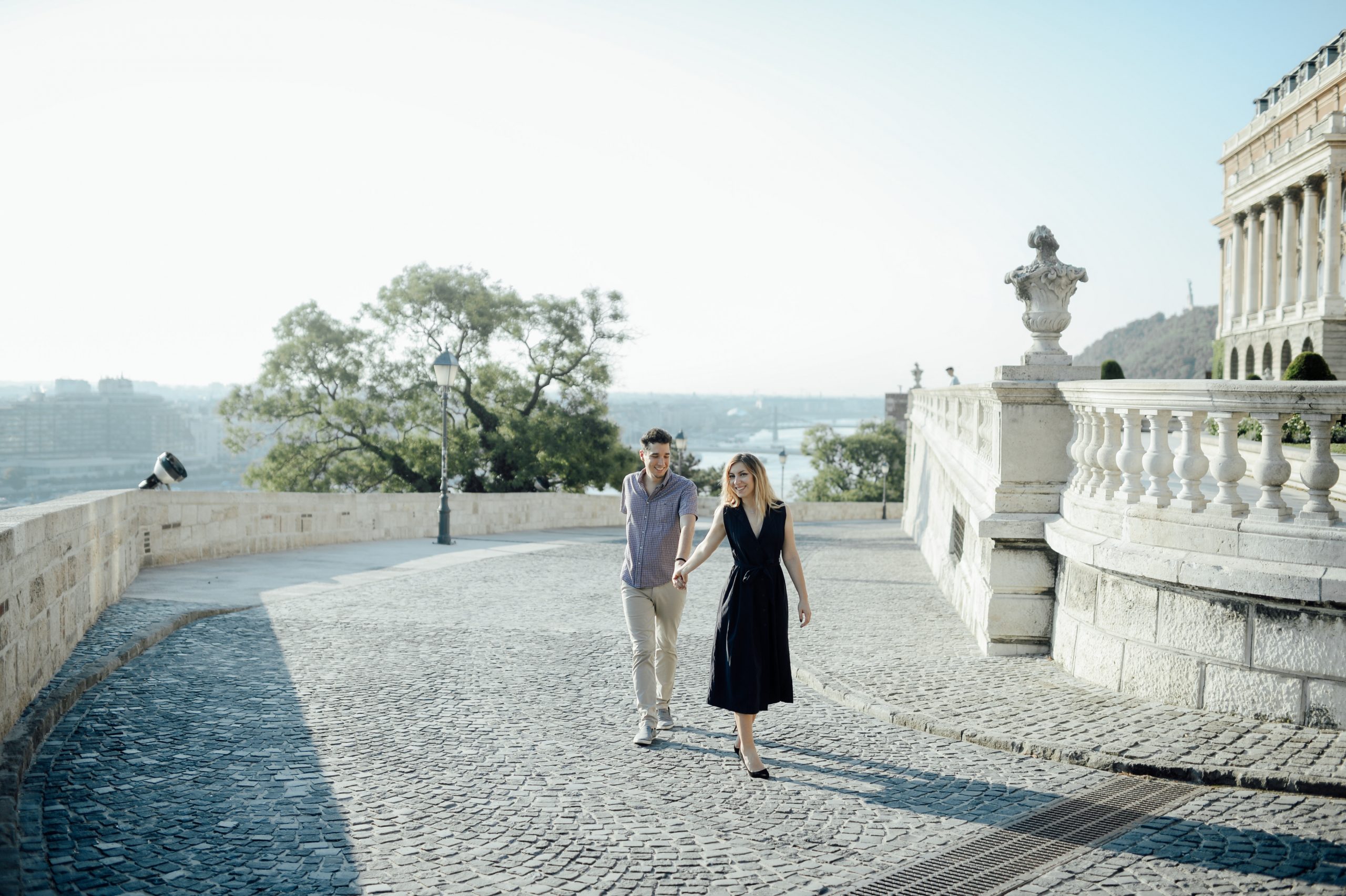
January: Museums
When thinking about when to visit Budapest, why not think about the beginning of the year? Although the weather will be cold, the crowds will be nonexistent. If you don’t like crowds and cold weather doesn’t bother you the least bit, I recommend visiting in January. I like to call it the museum season.
Fortunately, Budapest has a cornucopia of quality museums, including the Museum of Fine Arts, whose collection includes works of art by Leonardo da Vinci, El Greco, Titian and Raphael. Other must-visit museums in Budapest include the Hungarian National Gallery, located inside the Royal Palace of Buda Castle, which showcases masters of Hungarian fine art and international art; the Ludwig Museum, a contemporary art museum where you can view pop art by Andy Warhol and Roy Lichtenstein; and the House of Terror, once the headquarters of the Hungarian secret police and today a museum featuring exhibits related to the fascist and communist regimes and a memorial to their victims that were detained, interrogated, tortured or killed in the building.

February: Széchenyi Thermal Baths
February in Budapest will still be cold, with a daytime high around 40 degrees F, as it’s still winter, but it’s also one of the driest months. But you can still get wet while warming up at the Széchenyi Thermal Baths, one of the largest spa baths in all of Europe, consisting of 15 indoor baths and 3 large outdoor pools.
The medicinal, natural hot springs waters of the baths have been healing people since 1913, and today is still one of the most visited attractions in Budapest. In addition to the baths and pools, Széchenyi offers 10 saunas, massage therapy, facial treatments and more, located in an opulent Neo-Baroque palace. Whatever treatment you choose, Széchenyi Thermal Baths is a great and relaxing way to combat the cold. Visit in February for Valentine’s Day and surprise your loved one with a long spa weekend.
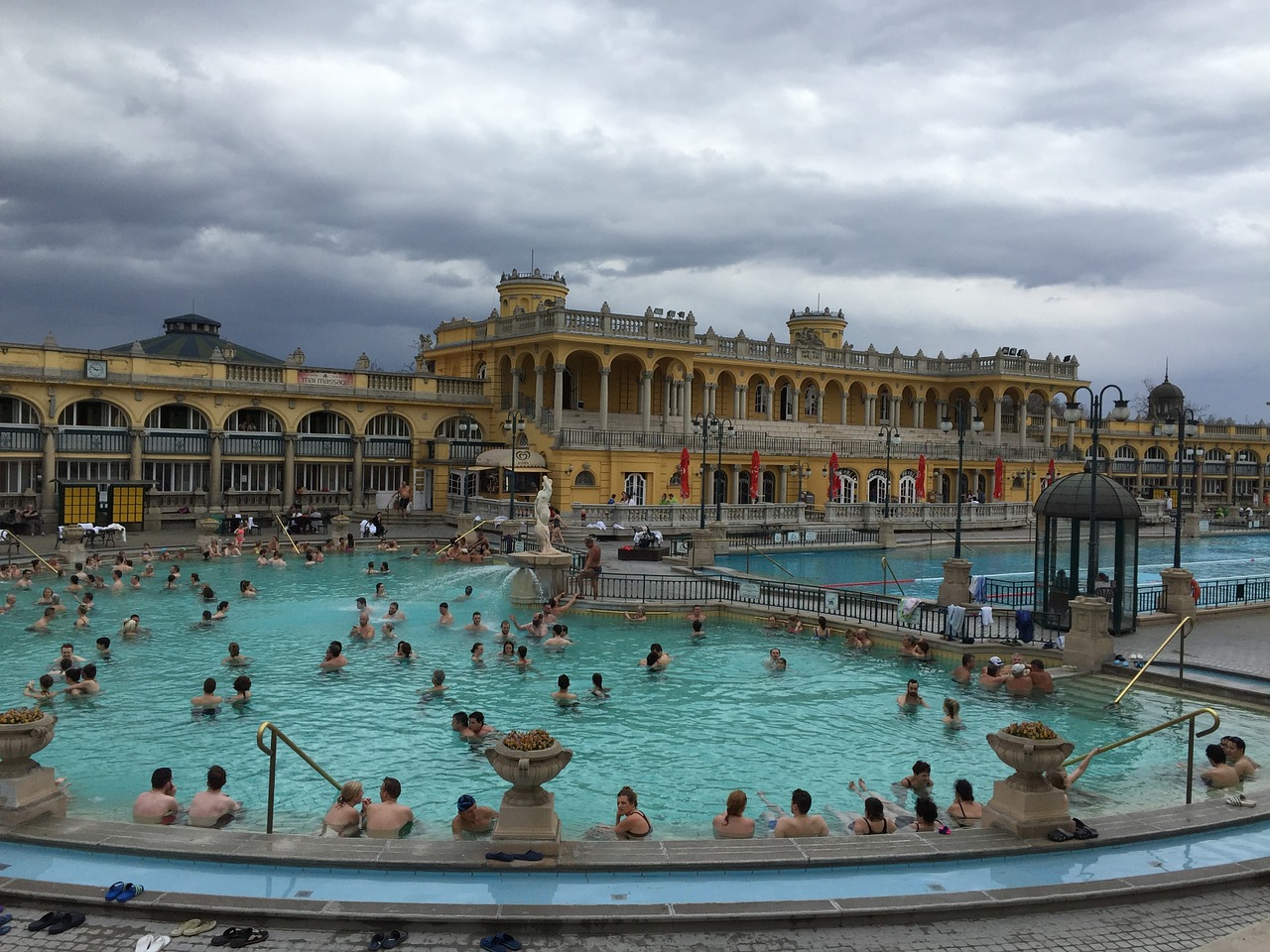
March: Danube River Cruise
March is the advent of spring, and in Budapest, the weather will slightly warm up during this month, but can still be chilly with average highs of 50 degrees F.
March is also still shoulder season, meaning the crowds have yet to arrive. These factors combined make it a good time to start getting outside again. Welcome spring and warmer weather than by taking a Danube river cruise.
A tranquil river cruise on the Danube, which separates hilly Buda from pedestrian-friendly Pest, is an ideal and relaxing way to see some of the top sights of Budapest in the comfort of a boat, such as the iconic Hungarian Parliament Building, built in the classic Gothic-Revival style, Buda Castle, Matthias Church, Széchenyi Chain Bridge and Margaret Island.
Theme cruises include craft beer cruises, wine cruises, dinner cruises, sunset cruises and many others. If you’re feeling adventurous, you can also cruise the Danube from Budapest all the way to Vienna.

April: Budapest Spring Festival and More
April in Budapest usually sees increasing temperatures, with daytime highs reaching 65 degrees F, and longer days. In fact, spring is in full swing, which is why this is the time of year for the annual Budapest Spring Festival, which is Hungary’s largest and most prestigious cultural festival.
The Budapest Spring Festival, which recently celebrated its 40th anniversary, features international stars, Hungarian performers, classical music, world music, jazz, opera, ballet, dance, theatre, contemporary circus and visual arts. The festival takes place at various venues throughout Budapest for 3.5 weeks.
In April, Budapest also hosts the Cherry Blossom Festival, a celebration of Japanese culture and tradition, at Füvészkert Botanical Gardens; Hungarian Folk Dance Festival, which includes competitions for professional and amateur dancers; Budapest Art Week Festival, whose programs include guided tours, workshops and meetings with artists at numerous venues; and multiple events on Easter, such as Easter egg hunts for the kids.
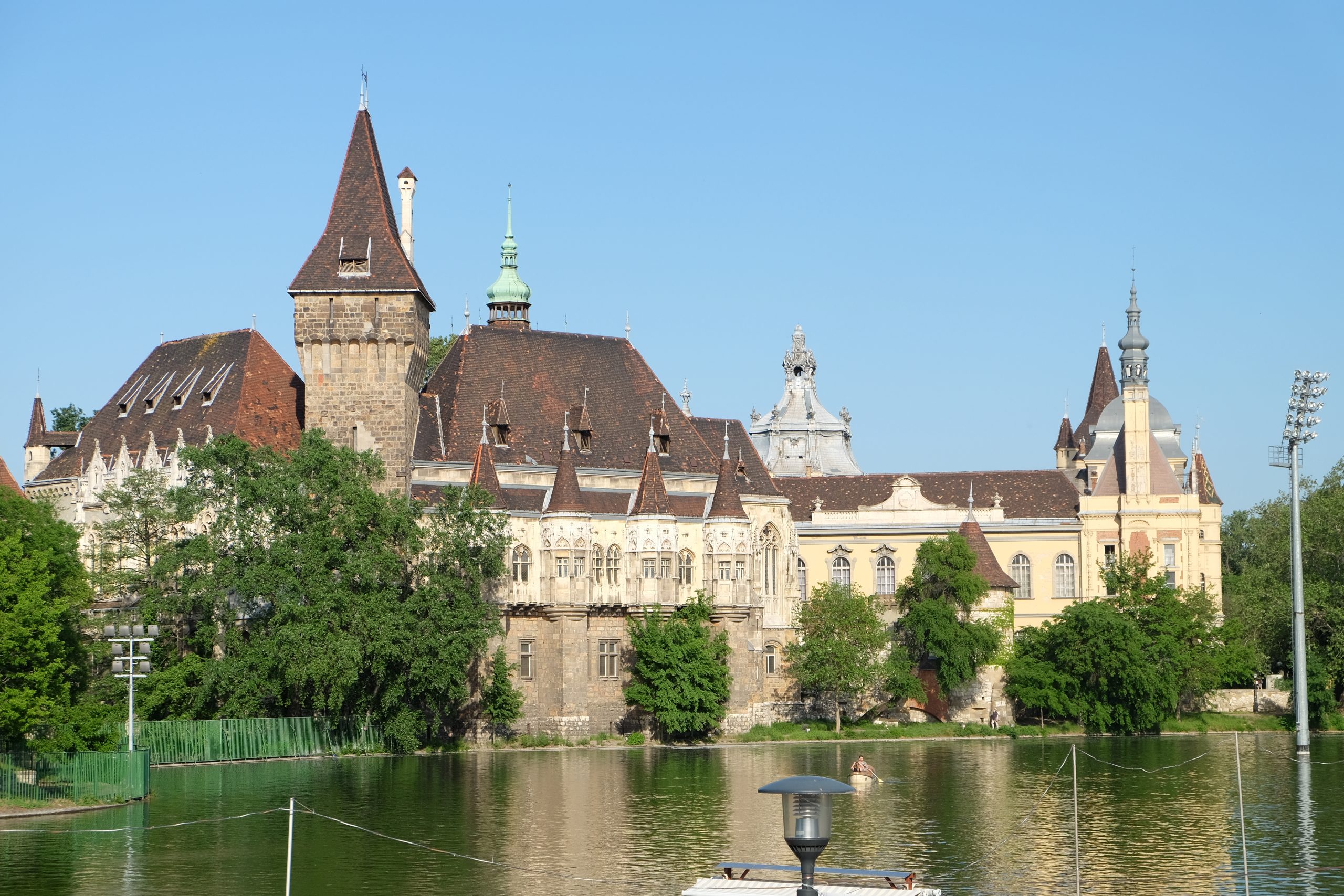
May: Buda Castle and Buda Hill
May is one of the best times to visit Budapest, as the weather is significantly warmer, with the average temperature a pleasant 73 degrees F, and it is right before the peak travel season, meaning there will be more tourists here but nowhere near the hordes of summer.
It is also the best time to be outside and explore Buda Castle and Castle Hill, where you can stroll back in time through winding cobblestone streets, under leafy promenades, past Baroque houses and around the historic castle.
In fact, the Buda Castle Quarter, a UNESCO World Heritage Site, is renowned for its historic sites, as well as commanding views of the Danube and Pest below, and you can even take the romantic Castle Funicular Railway to the heart of the Castle District.
Here you will find the aforementioned Hungarian National Gallery, which is great to visit any time of year; the Budapest History Museum, which is overflowing with artefacts and exhibits relating to Hungary’s rich history; Fisherman’s Bastion, whose seven towers, colonnades and embrasures were designed in the Neo-Romanesque style and offer some of the most spectacular views of the city; and the Széchenyi National Library, located in the southwest wing of Buda Castle, which serves as Hungary’s national library and contains more than six million documents.
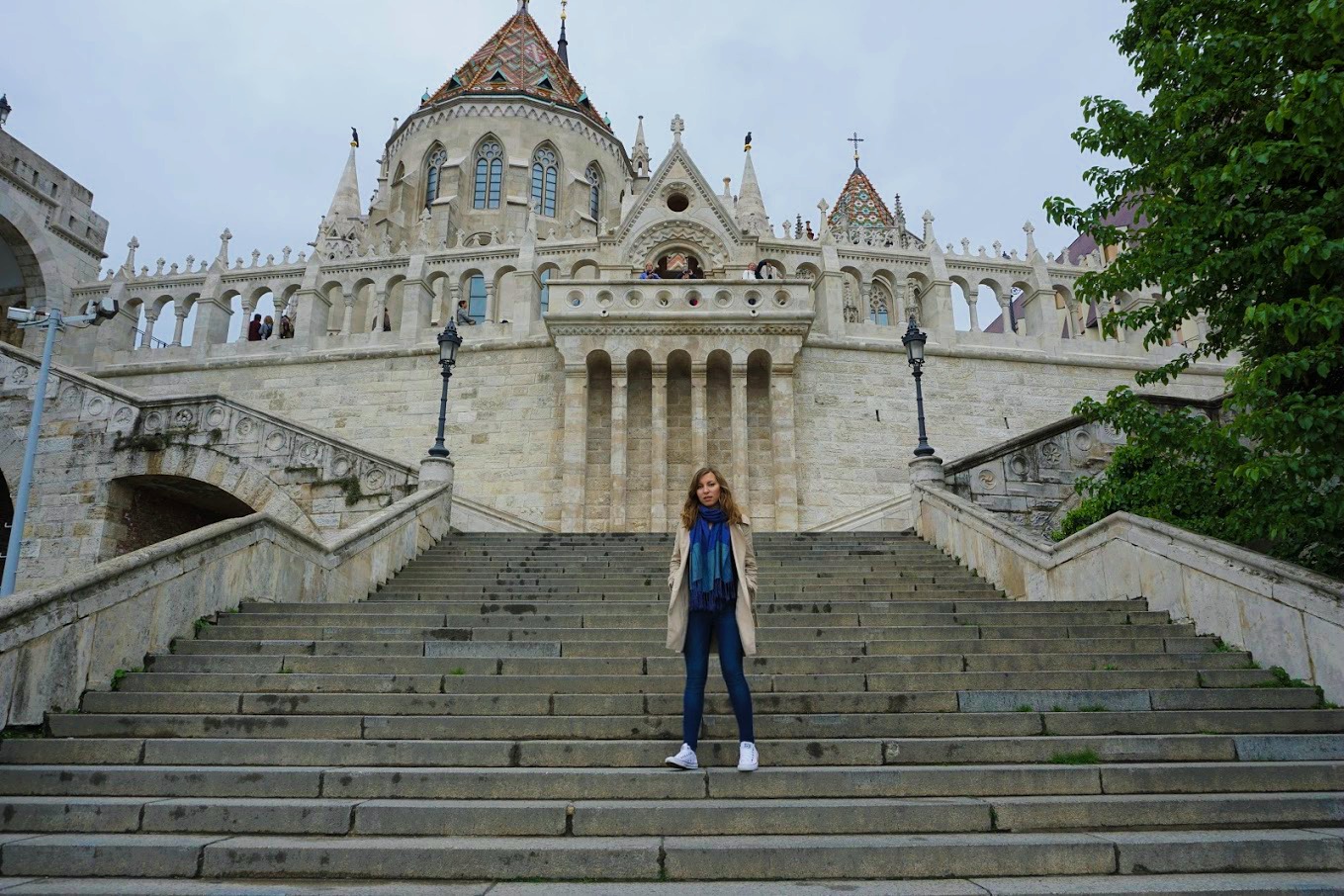
June: Pest
June is the start of the peak travel season, so you will see the summer crowds start to arrive in Budapest. It also starts to warm up in June, around 75-80 degrees F in the day, but it can also rain a lot during this month.
The museums and historic sights will start to fill up in June, particularly in the Buda Hill/Castle area, so it’s the perfect time to discover Pest, the flatter part of Budapest on the other side of the Danube. Here you will find Andrássy Avenue, a UNESCO World Heritage Site that is lined with trees and Neo-Renaissance mansions and townhomes that is also one of the most popular shopping streets in Budapest.
Andrássy Avenue, Budapest’s most famous boulevard, also consists of museums and a cornucopia of cafes and restaurants. Pest is also where you will find Heroes’ Square, which is where Andrássy Avenue begins or ends, whichever way you look at it. Heroes’ Square is the location of the Memorial Stone of Heroes and the iconic Millennium Monument, a 118-foot-high pillar crowned by a golden Archangel Gabriel who is holding the Hungarian crown and a cross.
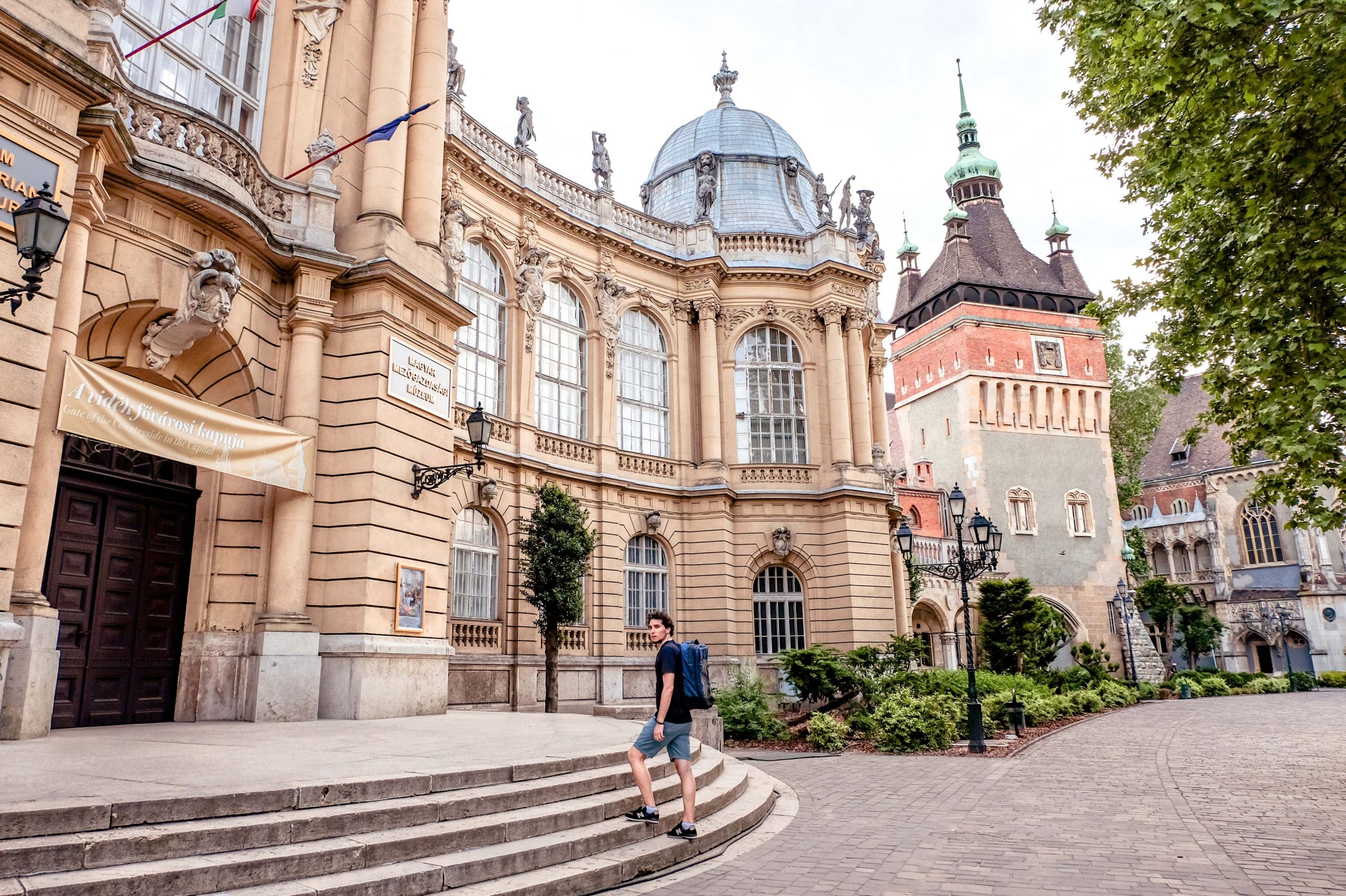
July: Gellért Spa
July is the hottest month of the year in Budapest, with average daytime highs of 80 degrees F, and has 15 hours of daylight. It’s also the busiest month for tourists!
A perfect place to cool down and simultaneously soak up all that sun is Gellért Spa, which has a mineral-rich thermal pool as well as a wave pool.
Gellért Spa is one of the most famous spa baths in Europe, due to its regal atmosphere in an Art Nouveau building and soothing natural hot spring baths. Founded in 1918, its medicinal water comes from the same underground springs that were used by the Knights of St. John in the 12th century. For pure fun, head outside and hit the surf at Gellért’s wave pool.
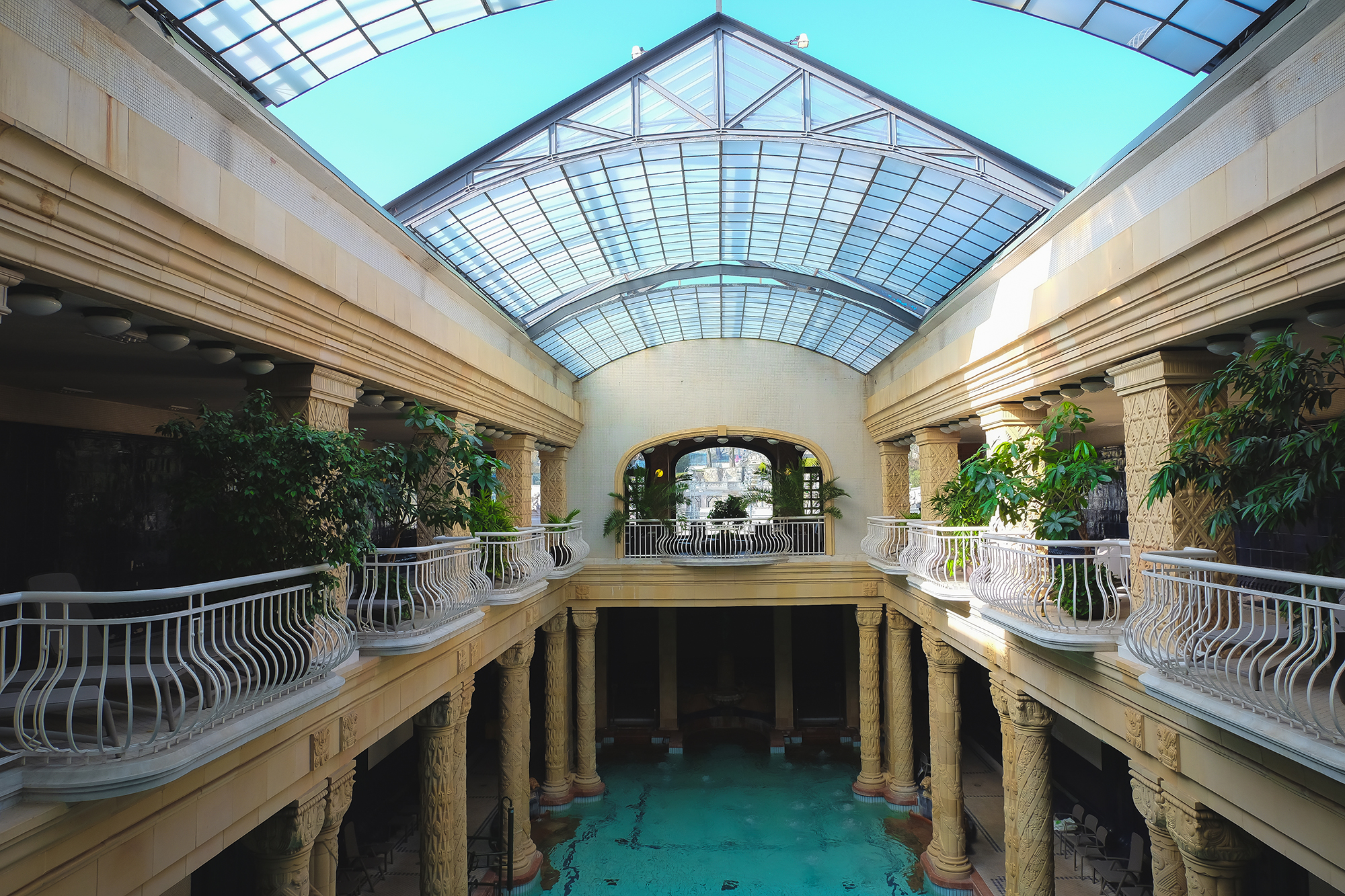
August: Sziget Festival
August can be quite hot in Budapest, with temperatures exceeding 80 degrees F. So to beat the heat, head to Óbudai-sziget, a tree- and shade-filled island on the Danube which is home to the annual Sziget Festival, one of the largest music and cultural festivals in Europe.
Every year, the week-long Sziget Festival in August features more than 1,000 performances. In fact, it has been called one of the 5 best festivals in Europe and the European version of Burning Man.
September: Segway Tour
September is the sunniest month in Budapest, the temperature drops a bit from summer, shoulder season reappears and crowds start to dwindle.
In other words, it’s one of the best times to visit Budapest, and a great time to take a Budapest Segway tour. This allows you to zip around the city on your own motorized, two-wheeled transporter. You and your guide will be stopping by some of Budapest’s best landmarks, including the Danube Promenade, St. Stephen’s Basilica, the Széchenyi Chain Bridge, Vorosmarty Square, Liberty Square and much more.
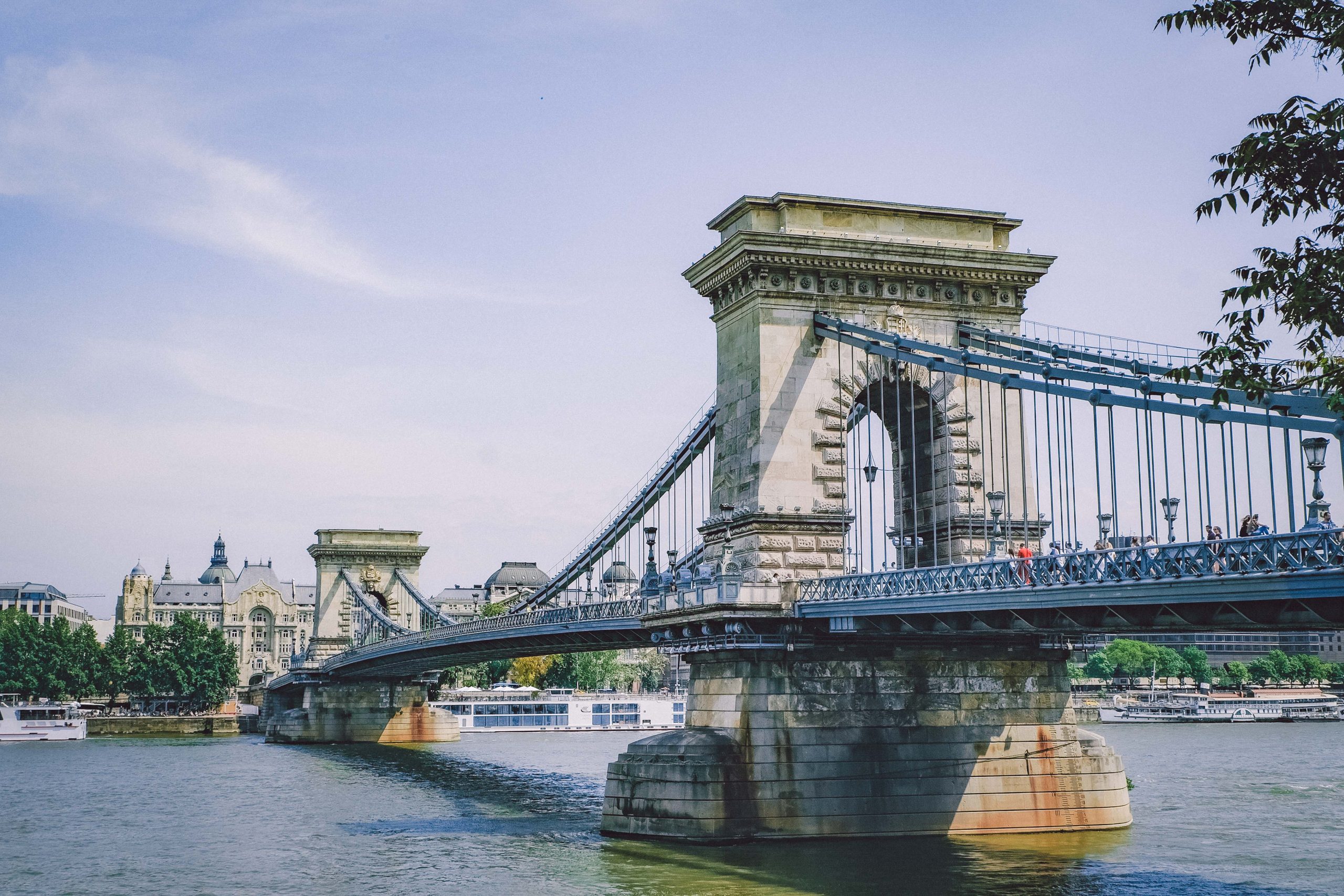
October: CAFe Budapest Festival
If you’re still wondering when to visit Budapest, October is definitely worth considering. In October, the mass summer crowds are a memory and the weather is mild, with average daytime highs of around 60 degrees F.
October is also the time for the CAFe Budapest Festival, formerly known as the Budapest Autumn Festival, one of the most important contemporary arts festivals in the country. CAFe Budapest features 110 programs at approximately 40 different venues and lasts for more than two weeks. The festival includes fine arts, music, dance, theatre, film, poetry and more.
November: Indoor Festivals
Budapest in November starts to get cold, but not unbearable, with average highs of around 45 degrees Fand moderate amounts of rain and snowfall. It’s time to head back inside, and fortunately, there are two large and tasty indoor festivals in Budapest during November: the New Wine and Cheese Festival and the St. Martin’s Day Festival.
The New Wine and Cheese Festival premiere the season’s first wines by vintners from around Hungary, as well as artisanal cheeses. The St. Martin’s Day Festival is an annual goose and wine-themed event held at historic and beautiful Vajdahunyad Castle.
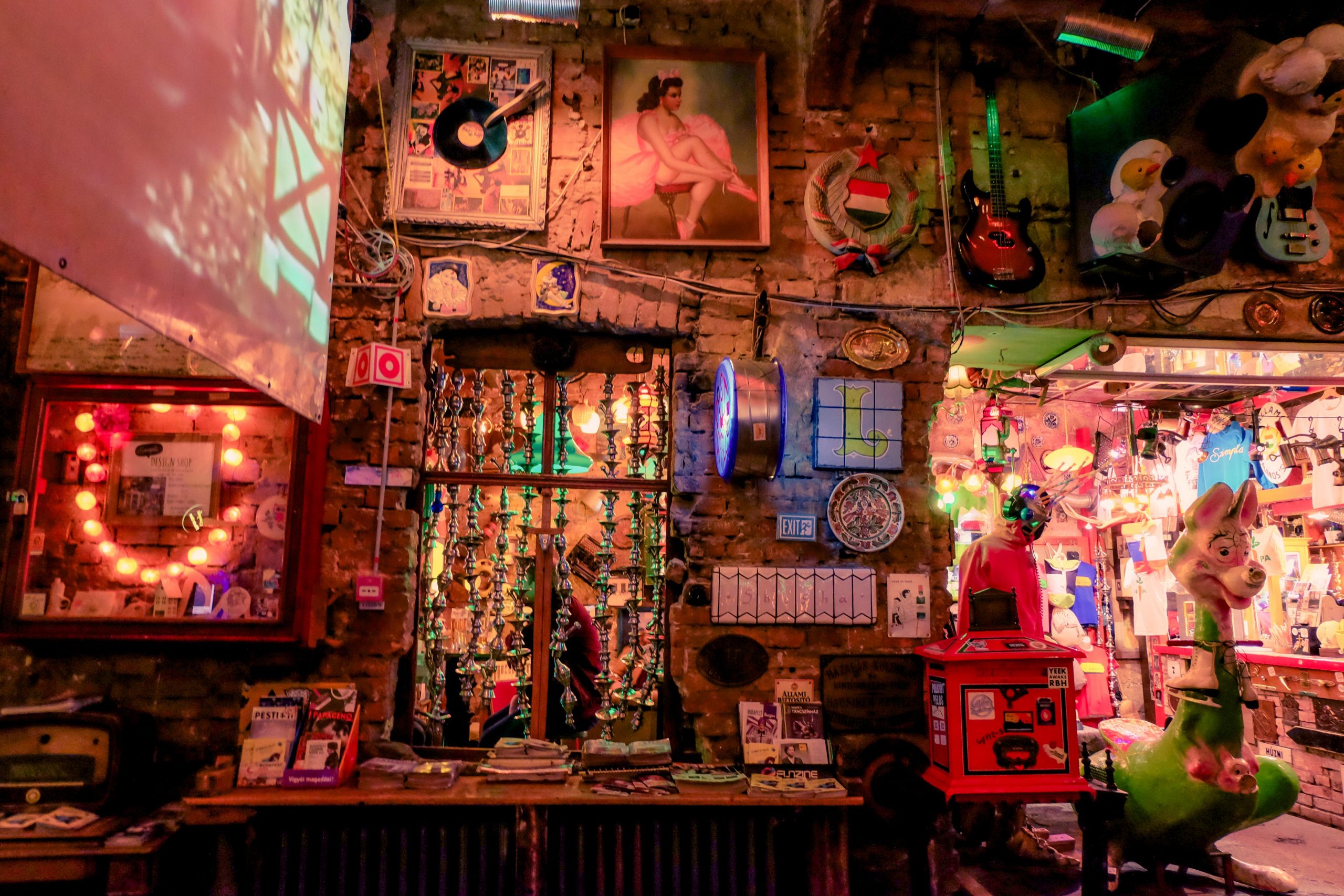
December: Christmas Markets
December is one of the coldest months in Budapest, with frequent snowfall and average daily temperatures a frosty 37 degrees. However, it is the perfect weather to put you in the Christmas spirit and inspire you to visit one of Budapest’s Christmas markets. One of the biggest, oldest, most beautiful and beloved Budapest Christmas markets is held every year at Vorosmarty Square, which in addition to Christmas goods stalls includes food and free concerts. Another large, popular and awe-inspiring Christmas market in Budapest is the Budapest Basilica Christmas Fair at St. Stephen’s Square, where you will find quality handcrafts and special Hungarian delicacies.
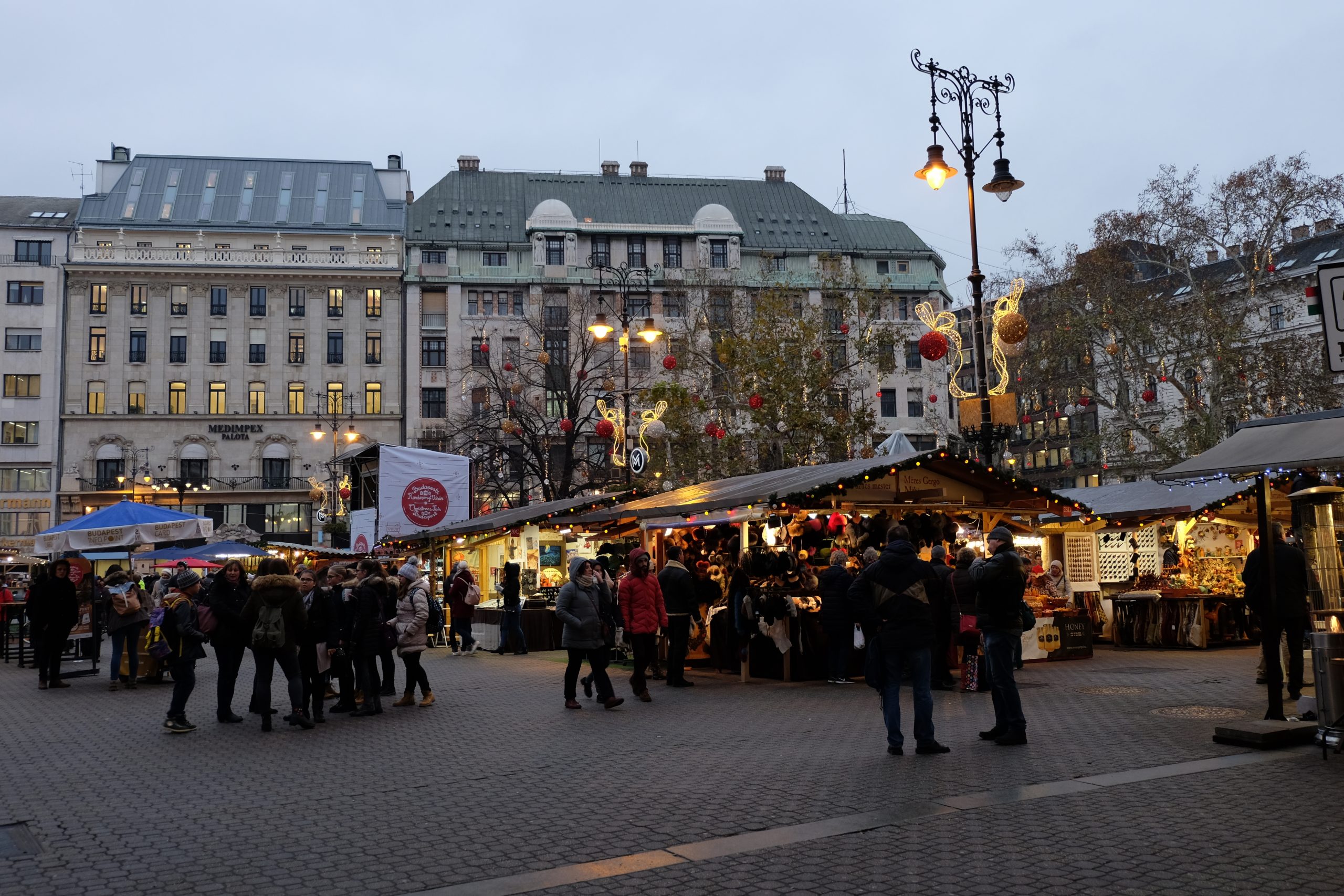

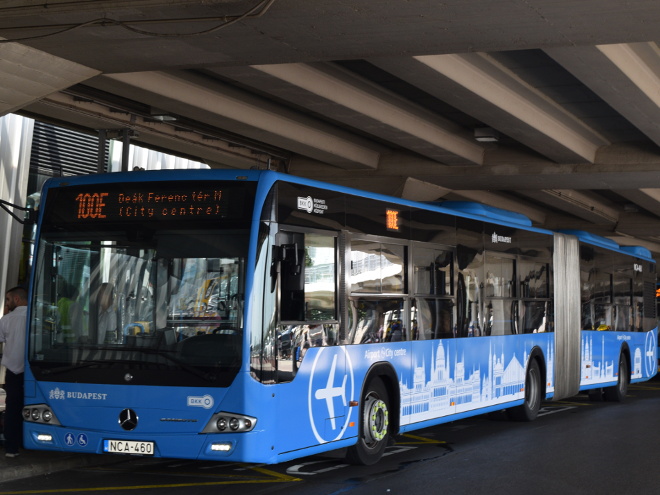
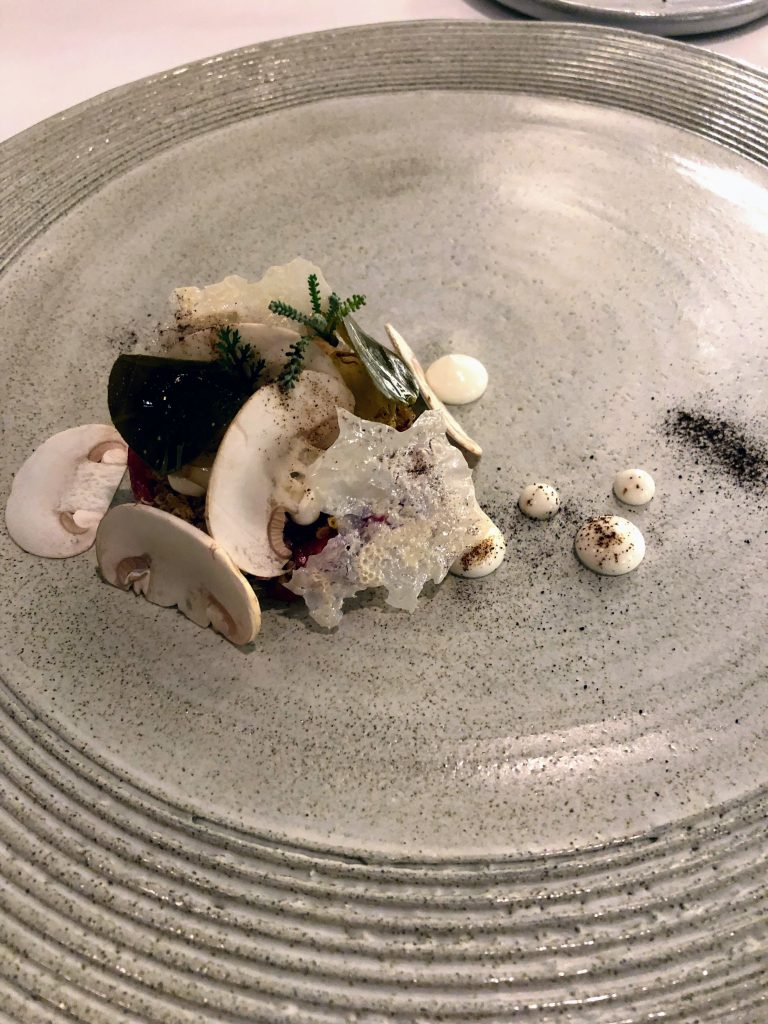
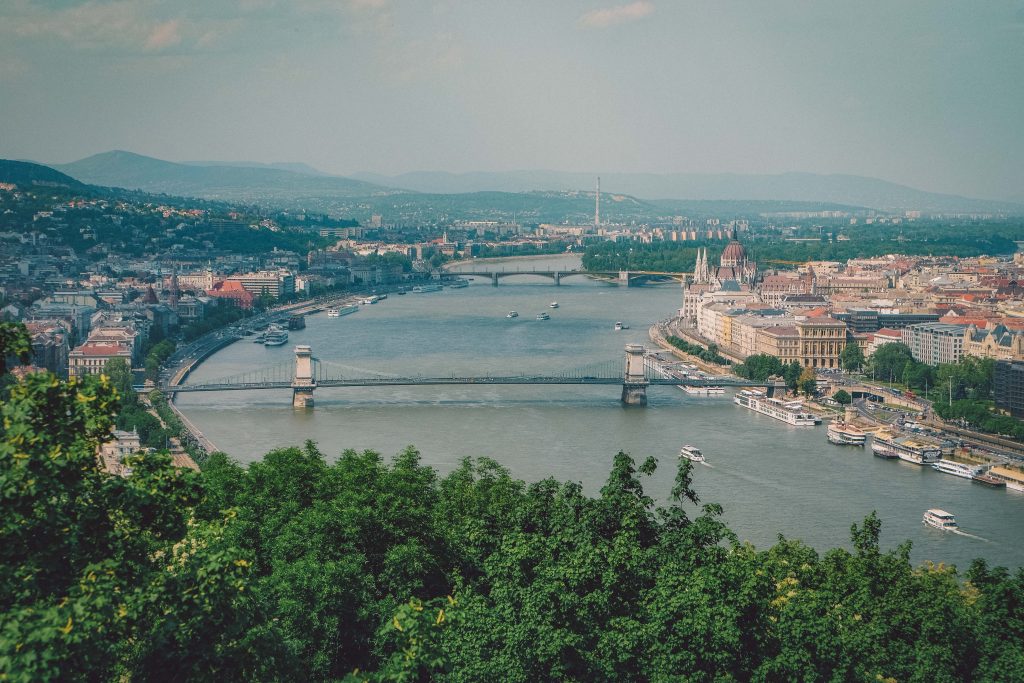

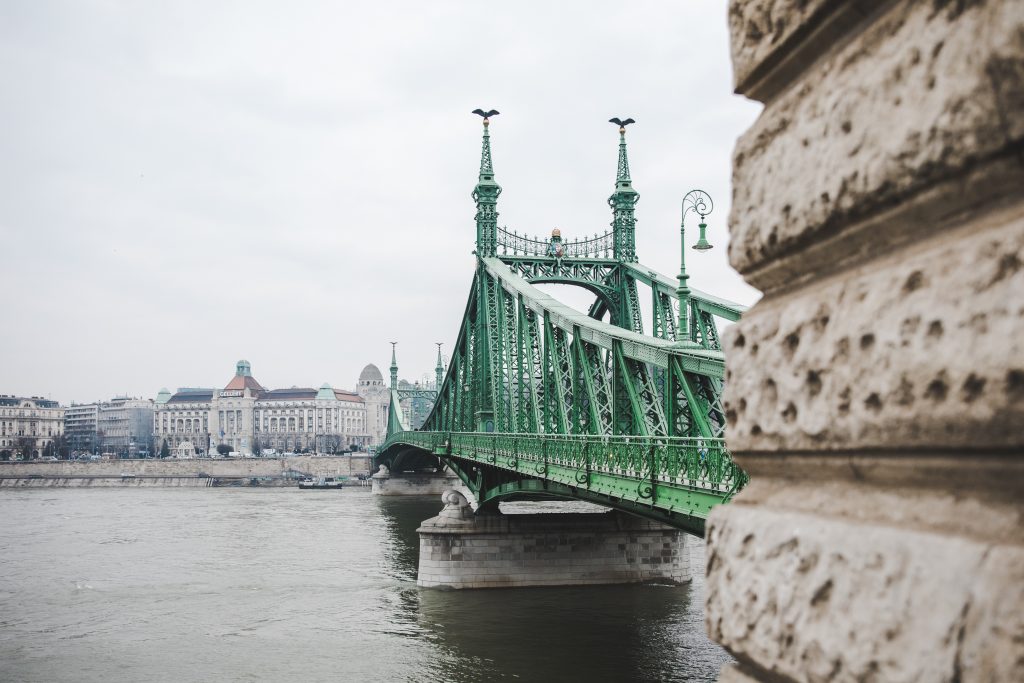



Leave a Reply